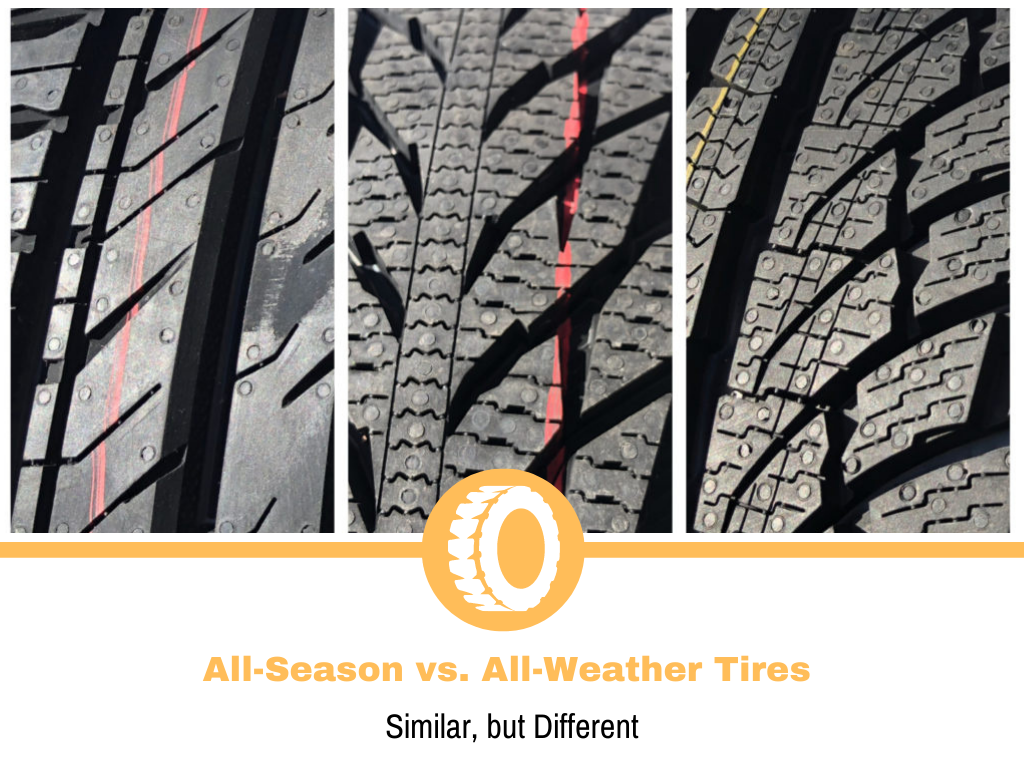When it comes to outfitting your car with the perfect set of tires, you might find yourself pondering a question as old as time itself: All-Season or All-Weather? It’s a bit like trying to choose between an umbrella and a raincoat on a dubious day—do you want adaptability, or are you ready to embrace the whimsy of the weather? Both options promise a measure of utility and longevity, but do they deliver widely varying performances based on the conditions you face? Let’s dive deeper into this tire talk to unravel the intricacies of all-season and all-weather tires.
To begin, consider what you expect from your tires. Are you cruising the city roads during sunny days, or do you often traverse through rain-soaked avenues or snowy paths? The nature of your driving environment plays a pivotal role in deciding which tire type will safeguard your journey. Both all-season and all-weather tires are designed for distinct purposes, so understanding their core functions goes a long way towards making an informed choice.
All-Season Tires: The Jack-of-All-Trades
All-season tires are a quintessential option for drivers who seek versatility without indulging in extremes. They blend attributes of both summer and winter tires, making them suitable for a variety of conditions—moderate weather, dry roadways, and rainy spells. One of the primary characteristics of all-season tires is their tread design, which is often symmetrical, offering a balance of stability and maneuverability.
They provide a commendable grip in lighter rain and some snowy conditions. However, it’s essential to understand their limitations. When facing harsher weather, such as heavy snow or icy roads, all-season tires can struggle to deliver optimal performance. The compound used in these tires is engineered to perform satisfactorily within a wide range of temperatures, yet it doesn’t excel in extreme clutch conditions.
Essentially, all-season tires are perfect for regions that experience moderate climates, providing peace of mind for those who prefer convenience over specialized performance. However, they might not inspire confidence when the snow starts to blanket your local roads, leading to the playful challenge of questioning if their omnipresence is truly enough for your driving needs.
All-Weather Tires: The Resilient Innovators
If you reside in a locale known for its unpredictable weather patterns—think heavy rainfall or frequent snowstorms—all-weather tires come into play as a specialized alternative. These tires are a unique breed, featuring a tread pattern that often resembles winter tires, along with a rubber compound designed to tackle both snow and slush without sacrificing performance in drier conditions.
The distinguishing feature of all-weather tires is their ability to transition seamlessly from one extreme to another. Equipped with the ‘Three-Peak Mountain Snowflake’ symbol, these tires are engineered to perform optimally in snowy conditions, presenting a significant advantage over their all-season counterparts. This snowflake insignia signifies adherence to strict testing protocols for severe snow performance, giving you increased confidence during winter driving.
Furthermore, all-weather tires are designed to remain pliable in lower temperatures, maintaining effective grip when conditions dip to a chilling frost. They offer a more robust sidewall construction which contributes to a smoother ride on rugged terrains. If the thought of unexpected flurries or sudden thunderstorms gives you the heebie-jeebies, investing in all-weather tires might banish those fears and keep your zest for driving alive.
Performance: A Comparative Analysis
Consider the tread wear as another critical facet. Generally, all-season tires may wear down faster than all-weather tires because they are not designed specifically to handle severe conditions. Invest in durability, and the higher initial cost of all-weather tires might yield better value over time due to their extended lifespan under varied conditions.
Fuel Efficiency and Comfort: Do They Stack Up?
Driving comfort and fuel efficiency are two other parameters to weigh. All-season tires barely edge out all-weather tires in fuel efficiency due to their lower rolling resistance, but in areas where safety and performance trump fuel economy, all-weather tires become a savvier choice. As you tackle winding roads or snowy landscapes, you’ll find the comfort level dialing up with a set of all-weather coated shoes on your ride. That smooth gliding effect can transform a daunting drive into a delightful voyage.
Conclusion: The Tipping Point
The great tire debate ultimately depends on one crucial question: What adventures lie ahead? If your travels weave through mild, rainy days, all-season tires would serve you well. Yet, if snow settles in your forecast and diverse conditions loom, all-weather tires are your go-to ally for overcoming nature’s whims. With numerous variables at play—the climate you encounter, driving habits, and personal preferences—your choice should resonate with both your practical needs and adventurous spirit.
As you absorb the myriad of options, the decision might even inspire you to ponder your next excursion—whether through sunlit highways or snowy paths. Choosing wisely today will undoubtedly facilitate countless journeys filled with memories tomorrow.
